Matthew Ardi
Low-Power Computer Vision: Status, Challenges, Opportunities
Apr 15, 2019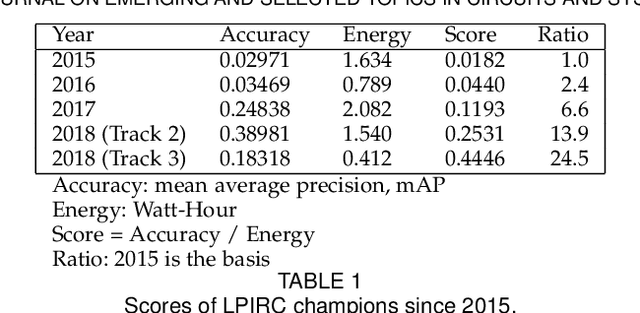
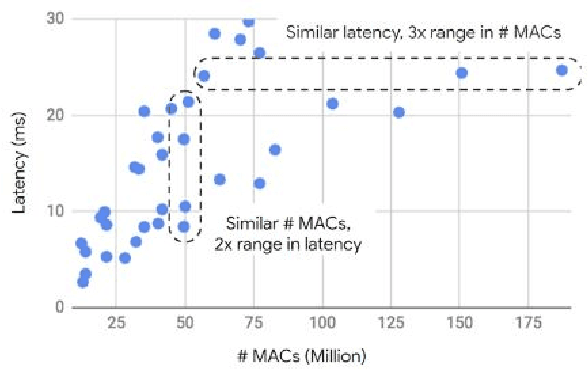
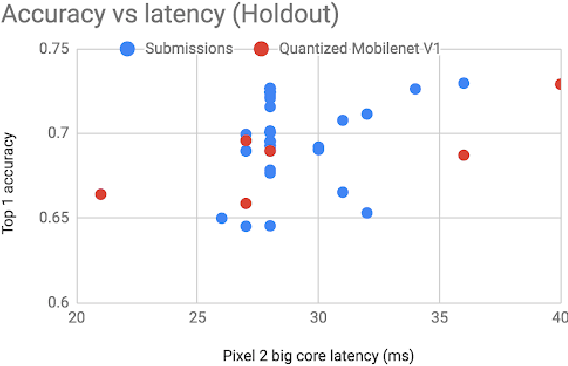
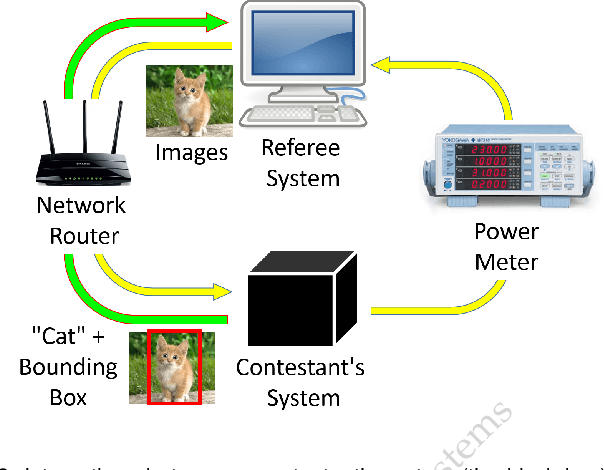
Abstract:Computer vision has achieved impressive progress in recent years. Meanwhile, mobile phones have become the primary computing platforms for millions of people. In addition to mobile phones, many autonomous systems rely on visual data for making decisions and some of these systems have limited energy (such as unmanned aerial vehicles also called drones and mobile robots). These systems rely on batteries and energy efficiency is critical. This article serves two main purposes: (1) Examine the state-of-the-art for low-power solutions to detect objects in images. Since 2015, the IEEE Annual International Low-Power Image Recognition Challenge (LPIRC) has been held to identify the most energy-efficient computer vision solutions. This article summarizes 2018 winners' solutions. (2) Suggest directions for research as well as opportunities for low-power computer vision.
Low Power Inference for On-Device Visual Recognition with a Quantization-Friendly Solution
Mar 12, 2019

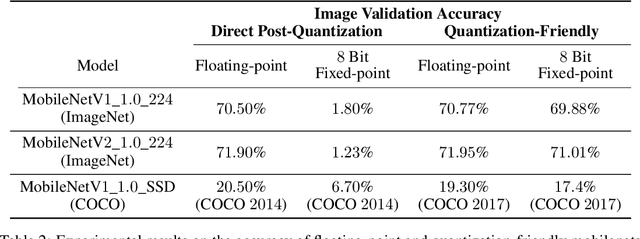

Abstract:The IEEE Low-Power Image Recognition Challenge (LPIRC) is an annual competition started in 2015 that encourages joint hardware and software solutions for computer vision systems with low latency and power. Track 1 of the competition in 2018 focused on the innovation of software solutions with fixed inference engine and hardware. This decision allows participants to submit models online and not worry about building and bringing custom hardware on-site, which attracted a historically large number of submissions. Among the diverse solutions, the winning solution proposed a quantization-friendly framework for MobileNets that achieves an accuracy of 72.67% on the holdout dataset with an average latency of 27ms on a single CPU core of Google Pixel2 phone, which is superior to the best real-time MobileNet models at the time.
2018 Low-Power Image Recognition Challenge
Oct 03, 2018Abstract:The Low-Power Image Recognition Challenge (LPIRC, https://rebootingcomputing.ieee.org/lpirc) is an annual competition started in 2015. The competition identifies the best technologies that can classify and detect objects in images efficiently (short execution time and low energy consumption) and accurately (high precision). Over the four years, the winners' scores have improved more than 24 times. As computer vision is widely used in many battery-powered systems (such as drones and mobile phones), the need for low-power computer vision will become increasingly important. This paper summarizes LPIRC 2018 by describing the three different tracks and the winners' solutions.
 Add to Chrome
Add to Chrome Add to Firefox
Add to Firefox Add to Edge
Add to Edge